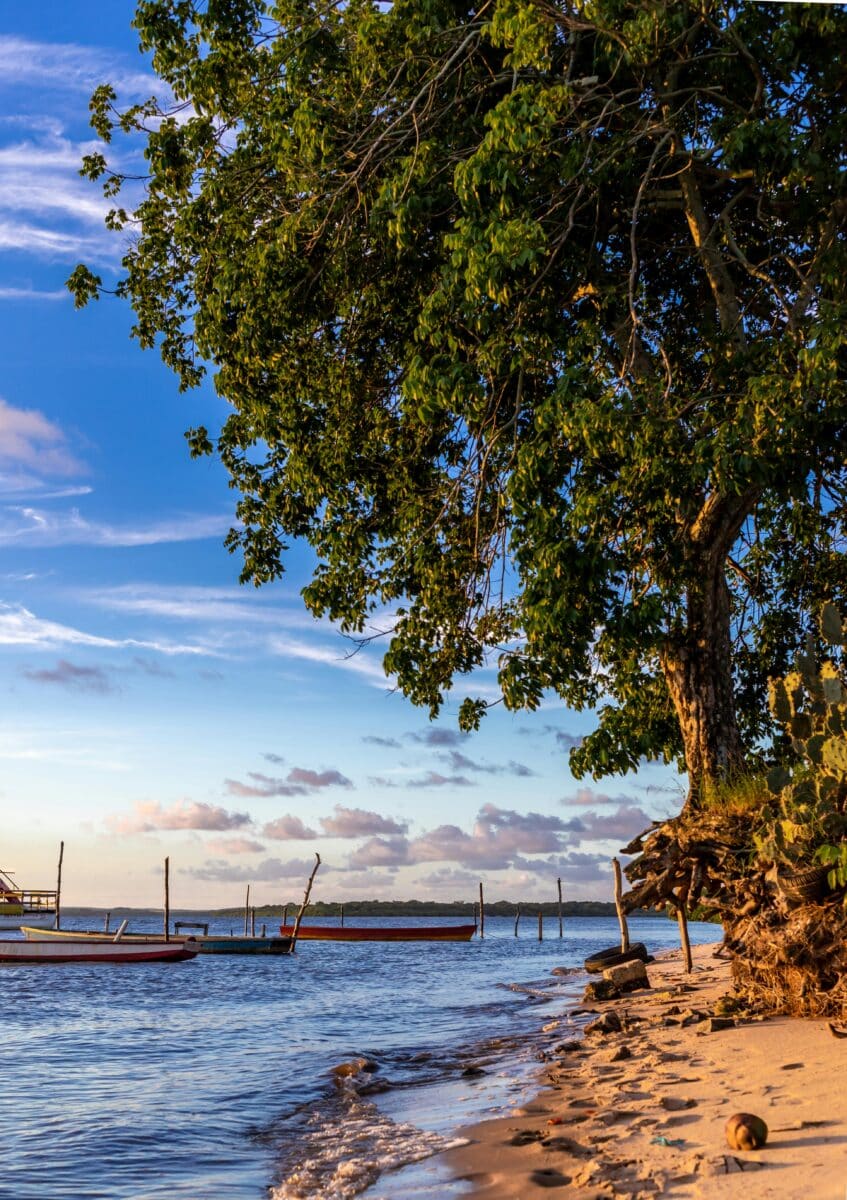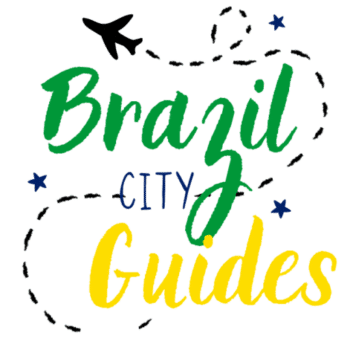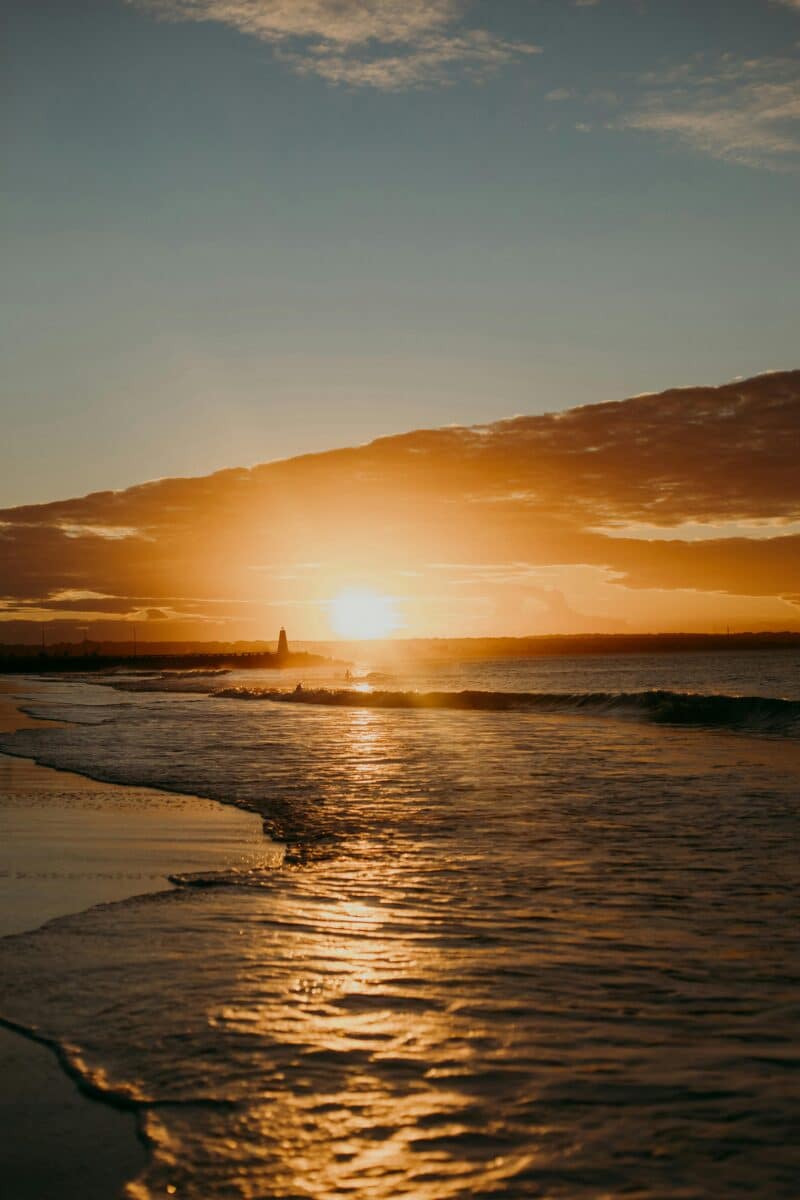João Pessoa, the capital of the state of Paraíba, is one of Brazil’s third oldest cities, founded in 1585. Located in the Northeast region, on the shores of the Atlantic Ocean, this city has a history marked by colonial disputes and cultural diversity. Initially, Portuguese settlers established the town on the banks of the Sanhauá River, in an area inhabited by indigenous Potiguaras.
During the colonial period, the city faced constant attacks from foreign invaders. At the beginning of the 17th century, the Dutch occupied the region and stayed for almost two decades. When they regained control, the Portuguese consolidated João Pessoa as an important economic and military center.
The capital of Paraíba was given its current name in honor of the Paraíba politician João Pessoa Cavalcanti de Albuquerque, whose death in 1930 caused great commotion and contributed to the outbreak of the 1930 Revolution. Until then, João Pessoa was known as the City of Paraíba.
Over the centuries, the city developed into a regional hub. Its streets preserve traces of the colonial past, especially in the historic center of joão Pessoa, where baroque buildings, colonial architecture, and old churches narrate chapters of a long history. João Pessoa also stands out for its abundant vegetation and is considered one of the most wooded cities in the world.
Today, this oldest city combines history, modernity, and nature. The historic center preserves important buildings such as the Santo Antônio Convent and the São Francisco Church (San Francisco), symbols of the colonial past. At the same time, the seafront, with its beautiful beaches and urban modernization, represents the dynamism of contemporary João Pessoa.
In addition to its natural beauty and architectural heritage, João Pessoa stands out as a cultural center, promoting festivals, artistic events, and activities that preserve and spread the rich heritage of the Northeast.
The city not only bears witness to Brazil’s rich history but also continually reinvents itself, keeping alive its essence of resistance, culture, and hospitality.
To enjoy the beaches at their most beautiful, visit between December and March, when the sea shows shades ranging from baby blue to aqua green and warm water. With the arrival of the rains, the seas lose their transparency and only recover their intense blue on the eve of summer. Come with me and I’ll tell you more about this wonderful city.
Bessa
Bessa Beach is located in a residential neighborhood and remains discreet, away from the main thoroughfare. Only the final stretch, near the Bessa Beach hotel, has a small seafront avenue, a promenade, and a slightly rougher sea. The old kiosks were removed by court order, and the site is now home to collapsible tents offering chairs, umbrellas, and drinks. The only structured beach bar in the area is on the part without the promenade, where the sea is calmer.
Cabo Branco Beach e Tambaú
These two beaches make up João Pessoa’s central urban waterfront, facing the main hotel zone. The promenade has several kiosks that are like bars and restaurants. Closer to the water, there are collapsible tents where they rent out chairs and umbrellas and serve drinks to the public. Every day, between 5am and 8am, the avenue closes to make room for joggers, walkers, cyclists, and rollerbladers. If you like rollerblading like me, take your skates with you to enjoy the ride.
On the left-hand side of the beach, in Tambaú, catamarans leave for the natural pools of Picãozinho and, occasionally, the natural pools of Seixas. At night, the kiosks are still open and offer a wide variety of cuisine, ranging from fast food and pizza to seafood, barbecue, and typical local dishes.
Intermares
Once you cross the Bessa district, the sea reappears, indicating your arrival in the neighboring municipality of Cabedelo, where you’ll find the first beach, Intermares. Known for its strong waves and the constant presence of surfers, you can rent chairs and umbrellas on this beach. If you like water sports, this is the ideal place.
Love Beach (Praia do Amor)
Praia do Amor, a few minutes’ walk from the bustling central beach of the village of Jacumã, attracts visitors looking for the famous Pedra Furada, a natural formation that creates a perfect tunnel for couples’ photos. All tours include a strategic stop at this spot, making it a must for anyone visiting the region.
Tours at Low Tide
The natural pools of Picãozinho, Tambaú, Seixas, and the island of Areia Vermelha only emerge during the lowest tides, and these tours are only offered 20 days a month. The best time is the day before and up to three days after the full moon or new moon, when low tide occurs in the morning and the sea level recedes significantly, revealing the natural formations.
The boat trip to Picãozinho leaves from Tambaú Beach and takes around 15 minutes. When you arrive, you’ll find crystal clear waters and a great diversity of fish. Take a snorkel to make the most of the dive! The less crowded Seixas natural pools, on the other hand, offer a quieter experience and are also well worth a visit.
Cabo Branco Station
The Cultural Center designed by Oscar Niemeyer in João Pessoa stands out mainly for its imposing architecture. Opened in 2008, the space seeks to promote art, culture, and events in a setting where the architect’s trademark curved lines dominate the look.
The project includes a main tower and a large outdoor space where fairs and cultural events take place. However, the center does not yet display a significant permanent collection or host large-scale exhibitions regularly. Nevertheless, local organizers use the facilities for temporary events, workshops, and artistic performances.
Those traveling to the beaches on the south coast of Paraíba often make a quick stop there, either to admire Niemeyer’s work or to take photos of the modern setting. Located on the way to Coqueirinho and Tambaba, the center invites visitors to appreciate the architect’s creativity and the beauty of the region.
Cabo Branco Lighthouse
The Cabo Branco Lighthouse, located in João Pessoa, stands out for its privileged geographical position: it was built on the easternmost point of the Americas, where the sun rises first. Inaugurated in 1972, the lighthouse has become a symbol of the city and attracts visitors who want to contemplate the beautiful view of the Atlantic Ocean and the surrounding cliffs.
Unlike traditional cylindrical lighthouses, the Cabo Branco lighthouse has a modern triangular shape, designed to represent a sisal plant, in homage to the region’s typical vegetation. Although it does not fulfill the function of maritime orientation, it has established itself as an important tourist and historical site.
Around the lighthouse, visitors will find a viewpoint offering a panoramic view of the coast and the preserved Atlantic Forest. The site also serves as a starting point for tours of the Jacarapé cliffs and Ponta do Seixas, where the true eastern tip of the continent is located. Recently, works to contain and preserve the area have been carried out due to the advance of eros.
City Tour of the Main Historical Sites
On this tour you’ll visit the main tourist attractions in João Pessoa, starting with stops at the Cabo Branco Lighthouse and Cabo Branco Station, both of which have been mentioned previously. The tour then takes visitors to the Historic Center, where the city’s architectural and cultural wealth is revealed.
The route includes the Solon de Lucena Park, with its emblematic central lake, and the Antenor Navarro Square, surrounded by historic mansions of baroque style. At the Hotel Globo, one of the oldest buildings in the city, the panoramic view of the Sanhauá River makes for beautiful photos, especially at dusk.
The tour continues to Praça dos Três Poderes, which houses the Paraiba government buildings, and on to important religious monuments such as the Basilica of Nossa Senhora das Neves, the Monastery of São Bento, with its imposing baroque architecture, and the Church of Nossa Senhora do Carmo, famous for its ornamental details.
Bosque dos Sonhos Parque Ecologico (Dream Forest Ecological Park)
Located next to the Cabo Branco Lighthouse, the park offers a wooded and ample space, ideal for families with children. With life-size figures of various animals (or nearly so, lol) and tributes to great names in Northeastern culture, the place guarantees fun and learning. It also has a snack bar, a restaurant, a craft fair, live music, and a children’s playground, making it an excellent leisure option for all ages.
Sunset at Jacaré Beach
Take note of this unmissable tip when you’re in João Pessoa: watch the sunset at Jacare Beach to the sound of the famous musician Jurandir do Sax, who has been enchanting tourists with his rendition of “Bolero de Ravel” for over 20 years. This performance has become Cabedelo’s main tourist attraction, offering an unforgettable experience and very beautiful as you watch the sunset over the horizon.
Photo on the Sign
The sign, located next to the historical monument Busto do Marquês de Tamandaré, between the beaches of Tambaú and Cabo Branco, was given a new version during the celebration of João Pessoa’s 436th anniversary. It was redesigned and reinstalled as a gift to the city, so it quickly became one of the most popular spots for visitors and locals alike for memorable photos and records.
Rent a bike
When walking along the coast of Cabo Branco or Tambaú, you will soon find bicycles and tricycles available for rent. This is a great option for you to explore the coast of João Pessoa in a light and fun way, enjoying the sea breeze while doing some physical activity. With flat and well-maintained bike paths, the ride guarantees a great experience and is also safe for everyone.
Sky Bar
The Sky Bar considered the second-highest bar in Brazil and the first with a sea view, is located on the 44th floor of a building in João Pessoa. The elevator ride up, which takes just over a minute, already offers a preview of the unique experience that awaits visitors.
Known for being trendy and popular, the Sky Bar attracts tourists and locals alike, so you may find queues, even on weekdays. If you want to guarantee a good seat and avoid long waits, it’s worth arriving early to enjoy the sophisticated atmosphere and the incredible panoramic view of the Paraiba coastline.
The drinks at the Sky Bar stand out for their impeccable presentation and creativity. Although the prices are high, as is usually the case in bars with similar proposals, the breathtaking view is worth every penny. It’s the kind of exclusive experience that only Joao Pessoa offers, with the coastline stretching majestically before your eyes.
Crafts
With its wide variety of regional handicrafts and affordable prices, this craft market is one of the most popular among visitors who want to take home an authentic souvenir from João Pessoa. There, you’ll find everything from colorful hammocks, handmade cachaças, delicate lace, typical clothing, cangaceiro hats, decorative gourds, and various creative souvenirs that reflect the rich culture of the Northeast.
Tambaba Rural Shopping
Shopping Rural is a charming open-air space with rustic, colorful, and enchanting decor. Filled with craft shops and family farm products, the place offers an authentic and welcoming experience. Simple but full of charm, it easily wins the eyes and hearts of those who visit.
Turtle Viewpoints and Finger of God Viewpoint (Mirantes das Tartarugas e Mirante Dedo de Deus)
The most breathtaking landscapes in João Pessoa, in my opinion, are concentrated in these two viewpoints, which really take your breath away. Located close to each other, they offer views of the paradisiacal scenery that you discover when exploring the beaches of the South Coast. I took this buggy ride and enjoyed the whole day surrounded by unforgettable landscapes and moments of pure connection with nature.
Liqueur and Cachaça Tasting
During the tour of the beaches, the buggy makes a stop at the Castelo da Princesa viewpoint, a great spot for taking photos and enjoying the scenery. However, the highlight is the kiosk next door, which offers a wide variety of regional liqueurs and cachaças for tasting, providing a tasty and typical Paraiba experience. A very friendly woman presents the drinks, and it’s a lot of fun.
Ecological Trails
João Pessoa has the most beautiful places for nature lovers. One of the main destinations is Mata do Buraquinho, an extensive environmental preservation area that is home to one of the largest portions of Atlantic Forest in an urban environment in Brazil. Walking along the trails allows you to fully immerse yourself in nature, with the opportunity to observe the rich local biodiversity, including native trees, birds, and small animals. The trails are well signposted and have different levels of difficulty, ensuring a safe and enjoyable experience, ideal for families, groups of friends, and adventurers.

Boat trip
This tour has a special charm, especially in the late afternoon. The boats leave from the Port of Cabedelo and offer a privileged view of the riverside vegetation and the small islands along the way. There is a stop at Ilha da Restinga, the highlight of the tour, where you can walk around and enjoy the tranquillity of the place. Some boats offer live music and meals on board.
Red Sand Island
This natural phenomenon happens when low tide reveals a sandbank in the middle of the sea, forming a kind of temporary beach. Boats and catamarans leave from Camboinha Beach in Cabedelo and take you to the island, where you can relax, swim, and enjoy snacks served on the boats. The perfect place for incredible photos, as the surrounding water is crystal clear and blue-green in color and you can still observe marine life.
Nightlife
Although João Pessoa is known for being a quiet city, the nightlife is hectic. The city’s bars and pubs offer a variety of options for all tastes. If you like a relaxed, alternative atmosphere, Empório Café, in Tambaú, is a good place, with live music and good drinks. The After Pub attracts a younger crowd with electronic music and theme parties.
City Cycle Tracks
The city of João Pessoa has invested heavily in creating cycle paths along its waterfront. Renting a bike is a great and fun way to explore the urban beaches, such as Tambaú and Cabo Branco. During the ride, you can stop to drink coconut water, take photos, and enjoy the view of the sea.
Local Gastronomy
Paraíba cuisine is a chapter in itself. As well as typical dishes such as peixada paraibana, you can try sweets made from local fruit such as cajá, umbu, and mangaba. The Mangai restaurant is one of the most famous, with a buffet offering various typical dishes. Another excellent option is Nau, which specializes in seafood, wonderful dishes, and an elegant atmosphere.
Wrap Up
João Pessoa enchants everyone with its diversity of attractions, combining natural beauty, cultural richness, and unique experiences. From the paradisiacal beaches of the south coast, with breathtaking viewpoints, to the natural pools formed at low tide, the city offers unforgettable moments for those who love contact with nature. In addition, the historic center reveals the importance of João Pessoa in the Brazilian colonial scene, with churches and buildings that hark back to past centuries.
Visitors to João Pessoa can also enjoy the charm of the well-kept waterfront, whether walking, cycling, or relaxing in the kiosks by the sea. The local gastronomy is also a highlight, offering typical dishes and regional drinks to please all palates. There is no shortage of options for those who like adventure, like me, such as buggy rides and nature trails.
Whether it’s admiring the sunset to the sound of the sax, tasting artisanal liqueurs, exploring craft markets, or marveling at the view from the Sky Bar, João Pessoa promises to please all tastes, always leaving a taste of “I want more”. It’s a destination that combines simplicity, hospitality, and natural beauty, making every moment special and worthy of incredible memories, is an ideal place.


